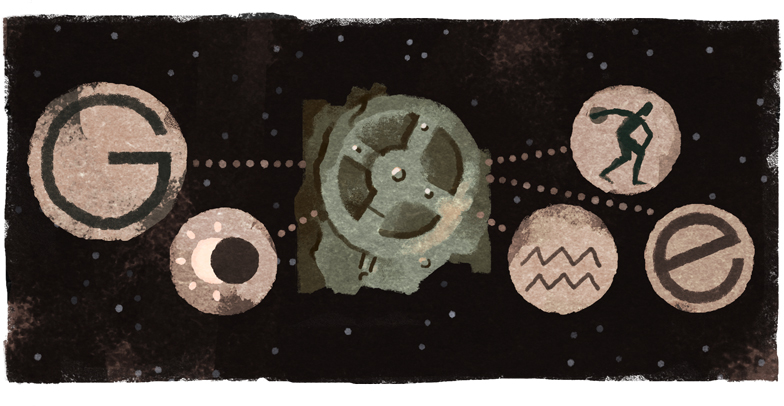
(Google)
The 115th anniversary of the discovery of the Antikythera mechanism, which some call the “world’s first computer,” is being marked with a Google Doodle.
“The Antikythera mechanism tracked planetary positions, predicted lunar and solar eclipses, and even signaled the next Olympic Games. It was probably also used for mapping and navigation,” Google says. “A dial on the front combines zodiacal and solar calendars, while dials on the back capture celestial cycles. Computer models based on 3-D tomography have revealed more than 30 sophisticated gears, housed in a wooden and bronze case the size of a shoebox.”
“Historians continue to ponder the Antikythera Mechanism’s purpose and inner workings, and visitors to the National Archaeological Museum of Greece marvel at its delicate complexity. Today’s Doodle illustrates how a rusty remnant can open up a skyful of knowledge and inspiration,” Google says.
What is the Antikythera mechanism? Here’s what you need to know:
1. The Antikythera Mechanism Was Discovered by a Greek Archaeologist in Artifacts From a Wrecked Roman Cargo Ship
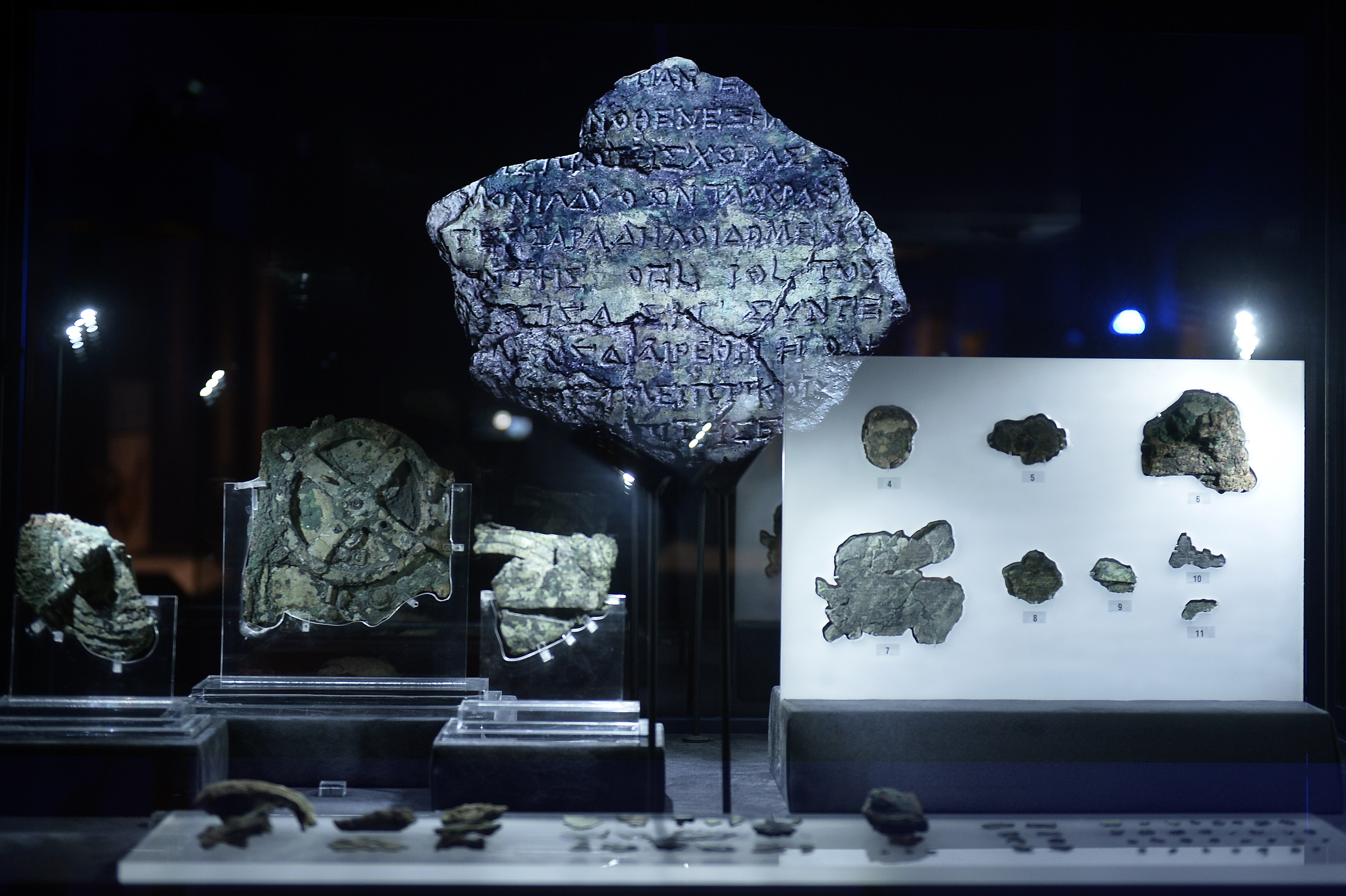
A picture taken at the Archaeological Museum in Athens on September 14, 2014 shows pieces of the so-called Antikythera Mechanism, a 2nd-century BC device known as the world’s oldest computer. (Getty)
The Antikythera mechanism was discover in 1901 by a Greek archaeologist in artifacts form a wrecked Roman cargo ship. It was located near the island of Antikythera to the northwest of Crete in the Dodecanese, according to Age of the Sage.
The ship was found by a Greek sponge diver and the mechanism itself did not generate much interest until about 1902, according to the history website. Researchers have been trying to learn about it ever since.
“The Antikythera mechanism is one of the world’s oldest known geared devices. It has puzzled and intrigued historians of science and technology since its discovery,” Age of the Sage writes. “The device seemed to have a range of interlocking gears made of bronze and a hand crank to give a turning movement to the geared mechanism, plus a display that showed information about the moon, sun and planets against a background of stars.”
2. The Mechanism Dates Back to At Least 85 BC & Possibly as Far Back as About 150 BC
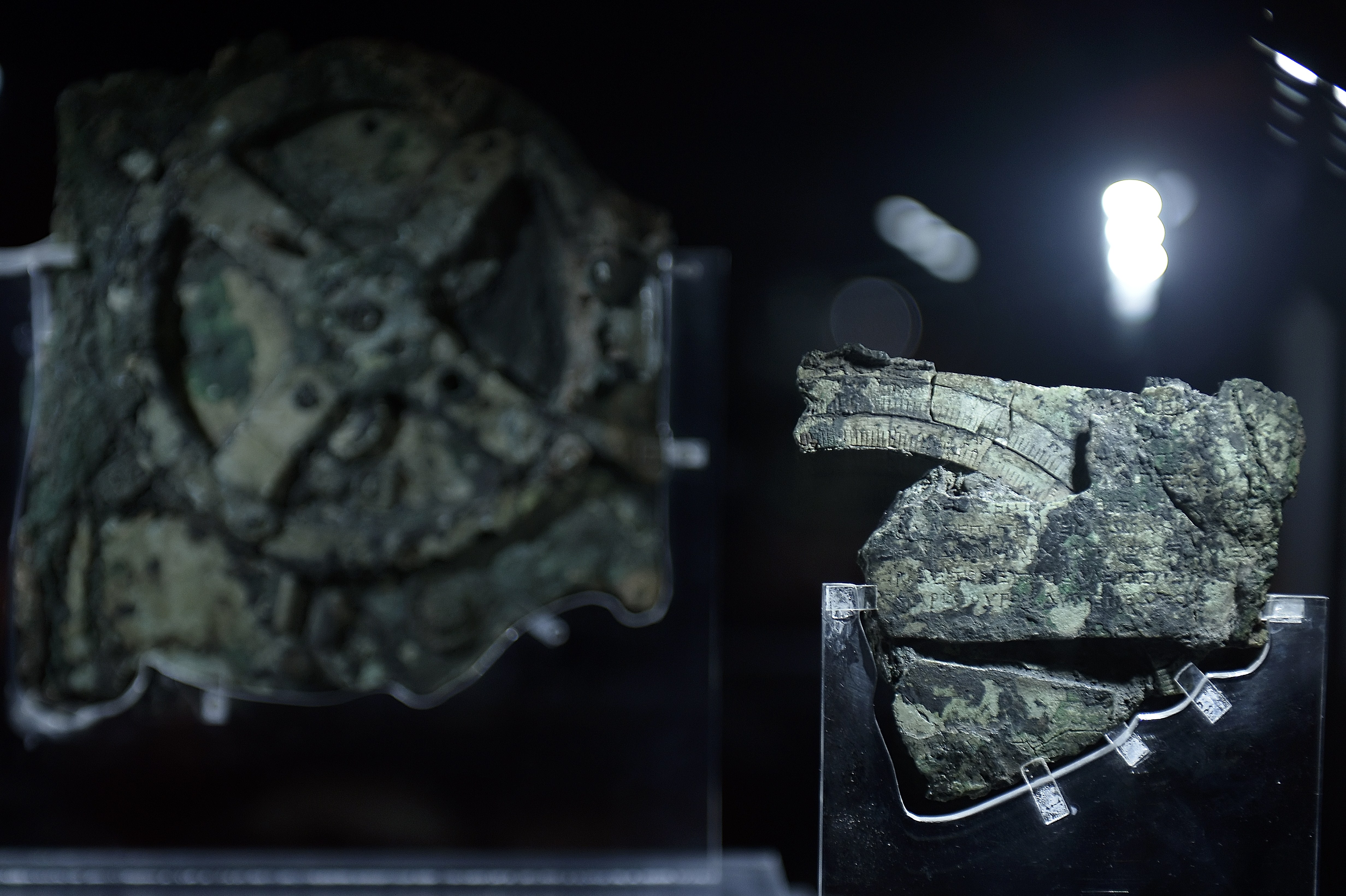
(Getty)
It is not known exactly when it was made or who mdae it.
According to Google, “The mechanism was initially dated around 85 BC, but recent studies suggest it may be even older (circa 150 BC). The crank-powered device was way ahead of its time — its components are as intricate as those of some 18th-century clocks. ”
Paul Iversen, of Case Western Reserve University, told the Smithsonian Magazine the month names found on the mechanism were used in Corinth and colonies in ancient northwest Greece. It also included the timing of the Olymics, Naa, a festival in Greece and Halieia, a festival held in Rhodes, Iversen said. He said the mechanism possibly was made in Rhodes, where philosopher Posidonius had a workshop.
Other historians say Cicero wrote about a bronze device made by Archimedes in the third century B.C.
But James Evans, a historian at the University of Puget Sound, told the magazine the mechanism is even older. He said the “eclipse cycle represented is Babylonian in origin and begins in 205 B.C.”
He said Hipparchus, an astronomer who was based in Rhodes at that time, possibly worked out the math by blending arithmetic-based predictions used by Babylonians and geometric theories used by ancient Greeks.
3. It Was About the Size of a Mantel Clock, With a Large Circular Face With Rotating Hands,
Likely Encased in Wood
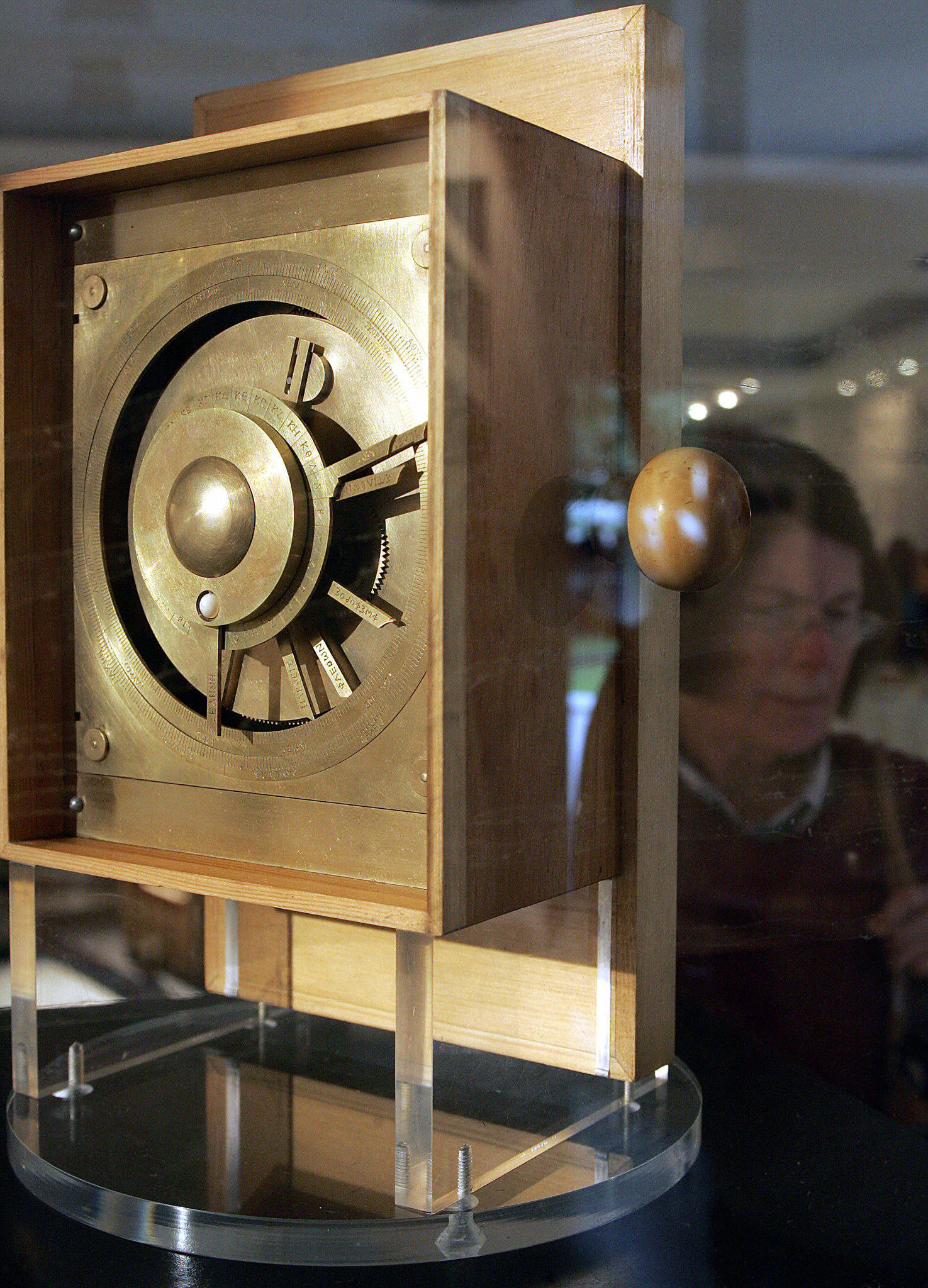
A reconstruction of Antikythera Mechanism is on display at the exhibition of Ancient Greek Technology in Athens, part of the 2nd International Conference on the ancient technologym, 17 October 2005. (Getty)
According to the Smithsonian Magazine, the Antikythera mechanism was about the size of the mantel clock. Bits of wood found in the wrecked ship indicated it was housed in a wooden case.
“Like a clock, the case would’ve had a large circular face with rotating hands. There was a knob or handle on the side, for winding the mechanism forward or backward,” the Smithsonian Magazine writes. “And as the knob turned, trains of interlocking gearwheels drove at least seven hands at various speeds. Instead of hours and minutes, the hands displayed celestial time: one hand for the Sun, one for the Moon and one for each of the five planets visible to the naked eye—Mercury, Venus, Mars, Jupiter and Saturn.
“A rotating black and silver ball showed the phase of the Moon. Inscriptions explained which stars rose and set on any particular date. There were also two dial systems on the back of the case, each with a pin that followed its own spiral groove, like the needle on a record player. One of these dials was a calendar. The other showed the timing of lunar and solar eclipses.”
4. Researchers Have Called it a ‘Philosopher’s Instructional Device’ Featuring a Guide on How to Use It
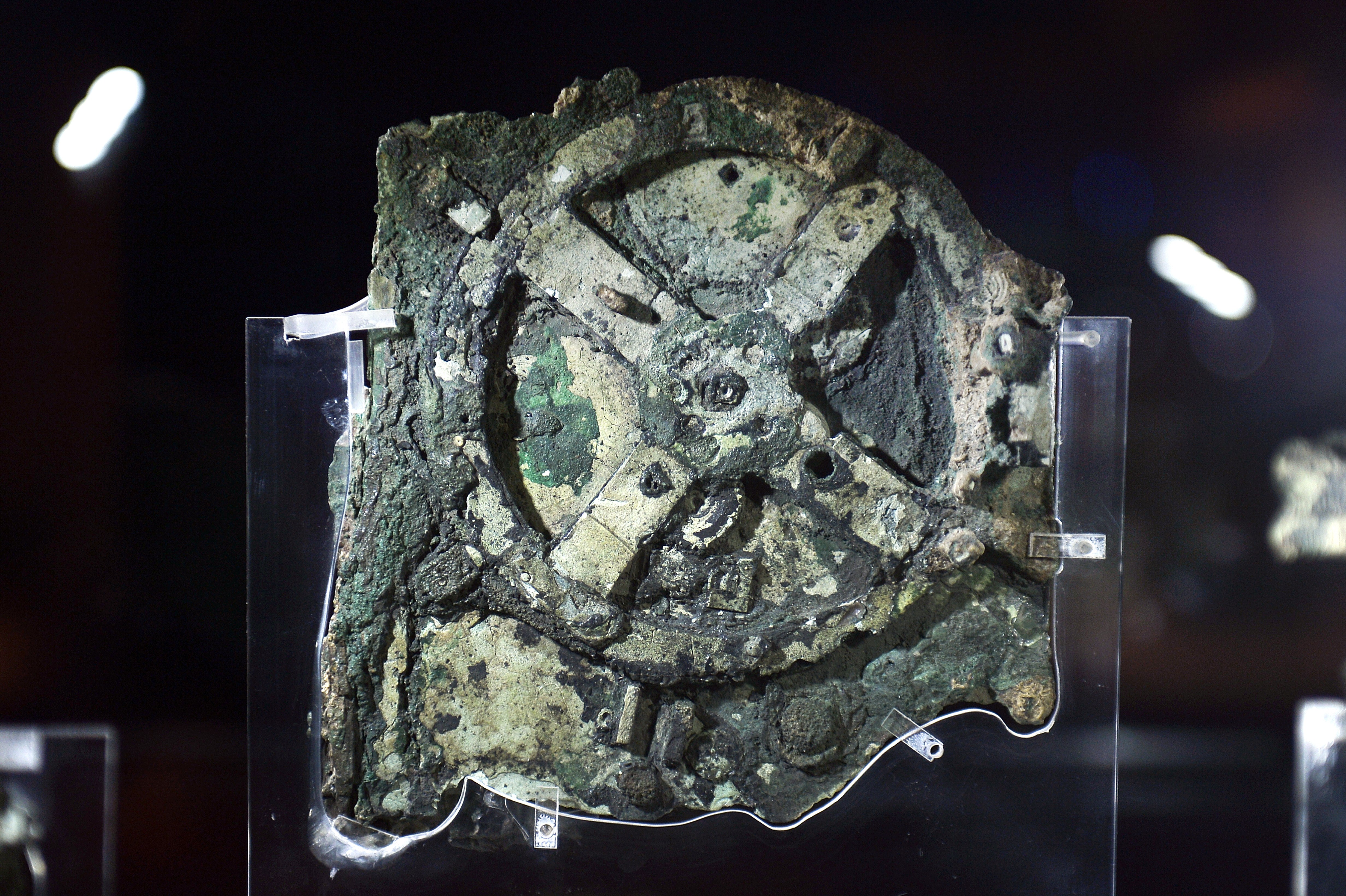
(Getty)
Alexander Jones, a New York University professor of the history of ancient science who worked with a research team on the mechanism, called it a “philosopher’s instructional device” in an interview with the Associated Press last year.
Jones and his team were able to read 3,500 characters of explanatory text in ancient Greek found inside the mechanism, about a quarter of the original, which he called a guide on how to use the instrument.
“It’s a lot of detail for us because it comes from a period from which we know very little about Greek astronomy and essentially nothing about the technology, except what we gather from here,” he told the AP. “So these very small texts are a very big thing for us.”
He said their research has found the mechanism served as a calendar of the sun and the moon, showing the phases of the moon, the position of the sun and moon in the zodiac, the position of the planets and predicated eclipses.
“It was not a research tool, something that an astronomer would use to do computations, or even an astrologer to do prognostications, but something that you would use to teach about the cosmos and our place in the cosmos,” Jones told the AP. “It’s like a textbook of astronomy as it was understood then, which connected the movements of the sky and the planets with the lives of the ancient Greeks and their environment.”
“I would see it as more something that might be a philosopher’s instructional device.”
You can read Jones and his team’s published findings here.
5. Models & Artifacts From the Mechanism Can Be Seen at the National Archaeological Museum of Greece
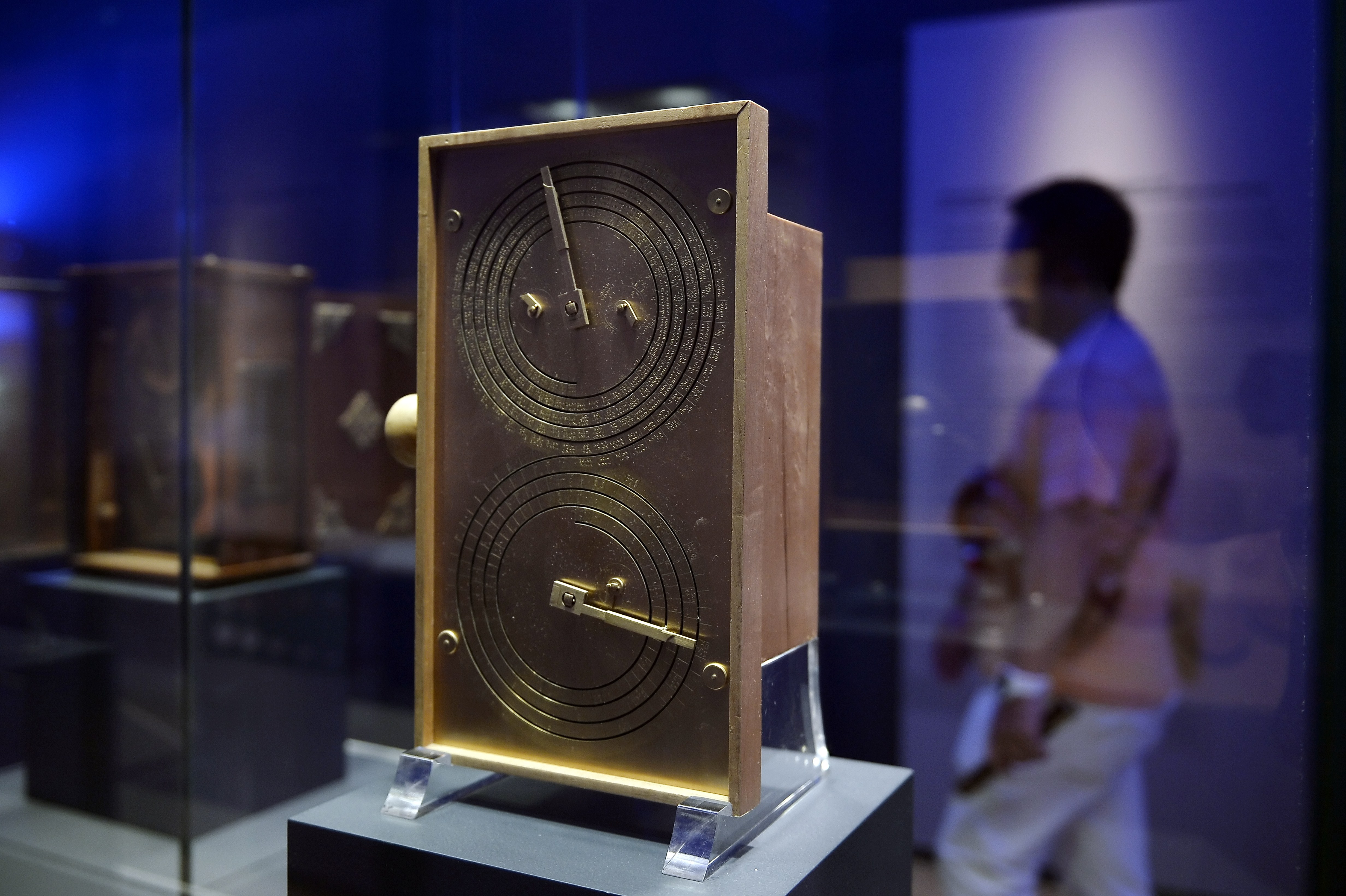
A visitor walks past a reconstruction of the the so-called Antikythera Mechanism. (Getty)
Artifacts from the Antikythera mechanism and reconstructed models of it can be viewed at the Natonal Archaeological Museum of Greece. The exhibit has toured around the world over the past decade:
Bronze fragment from a complex, mechanical tool with bronze gears housed inside a wooden case covered with inscriptions. Made by a genius in mathematics, astronomy and mechanics in the 1st cent. B.C., it remained unparalleled for at least a millennium afterwards. According to the conclusions of the Antikythera Mechanism Research Project, the device faithfully reproduces the moon’s motion across the sky and its phases during a month, forecasts eclipses, counts time and operates as a multi-faceted calendar based on circular or spiral scales. It should have been a useful tool for astronomic observations and teaching. Furthermore, it should have eased mapping and navigation, since it counts latitude (and possibly longitude).
You can read more about the museum display here.

Comments
What Is the Antikythera Mechanism? 5 Fast Facts You Need to Know